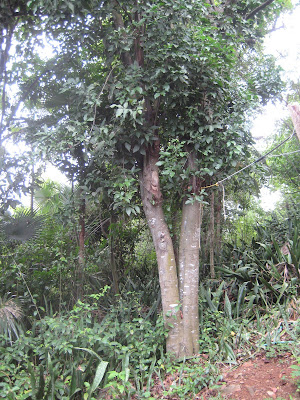There was for a time, down by the Catholic Church and the accompanying school of St. Peter and Paul’s, a Coca Cola bottling plant. In that area you could smell the sticky sweet of sugar and the syrup used to make the soda. The formula used in the islands was sweeter than that used in the states and I never developed a taste for it. But the smell from the bottling plant drifted onto to the street with its own distinct aroma. There was also the noise of rattling bottles.
Near-by was the subtle, watery, musty odor that emanated from the ice plant. Here bags of ice and large blocks were made for those who did not yet have refrigeration. The large blocks were also used by the men who sold shaved ice. Their carts smelled of the various syrups they poured over the ice; guava, tamarind, coconut, orange, banana…. These cool treats were the closest any of us got to snow covered with maple syrup.
A block or so away from the bottling and ice plants was Market Square. In its hay day, it was the center of activity. Everything was bought and sold there including a quarter of a million slaves.
Most everyone shopped there on Saturday for fresh fruit, vegetables and fish, including my grandmother and mother, who made the long journey from St. John, coming over on Friday and spending the night at either Hotel 1829 or the Grand Hotel so they could get to Market at the screech of dawn.
All around was the bustle of activity, of people gossiping and laughing and hawking their wares.
The Northside Frenchies came down from their farms up in the hills bringing their produce. Fisherman brought their catches. Women sold jams, jellies, homemade candy, coconut and guava tarts, herbs and spices. You would also see women carrying large baskets on their heads, baskets filled with fruit and vegetables and flowers. You have only to close your eyes and you can easily imagine the accompanying smells weaving themselves into the air. Like warm and cold currents in the ocean, each odor was distinct. Some stronger, some weaker, some heavy, some delicate.
Market Square is still there. And early on Saturday mornings people still sell their wares. While I there this summer I went down Market. But it is a shadow of its former self, with only one row of tables set up and only one stall in the bungalow being used.
Market Square at about 6 AM on a Saturday morning.

Nowadays the bungalow is merely something historic that tourists can take a picture of.
Town has lost its hub.













































